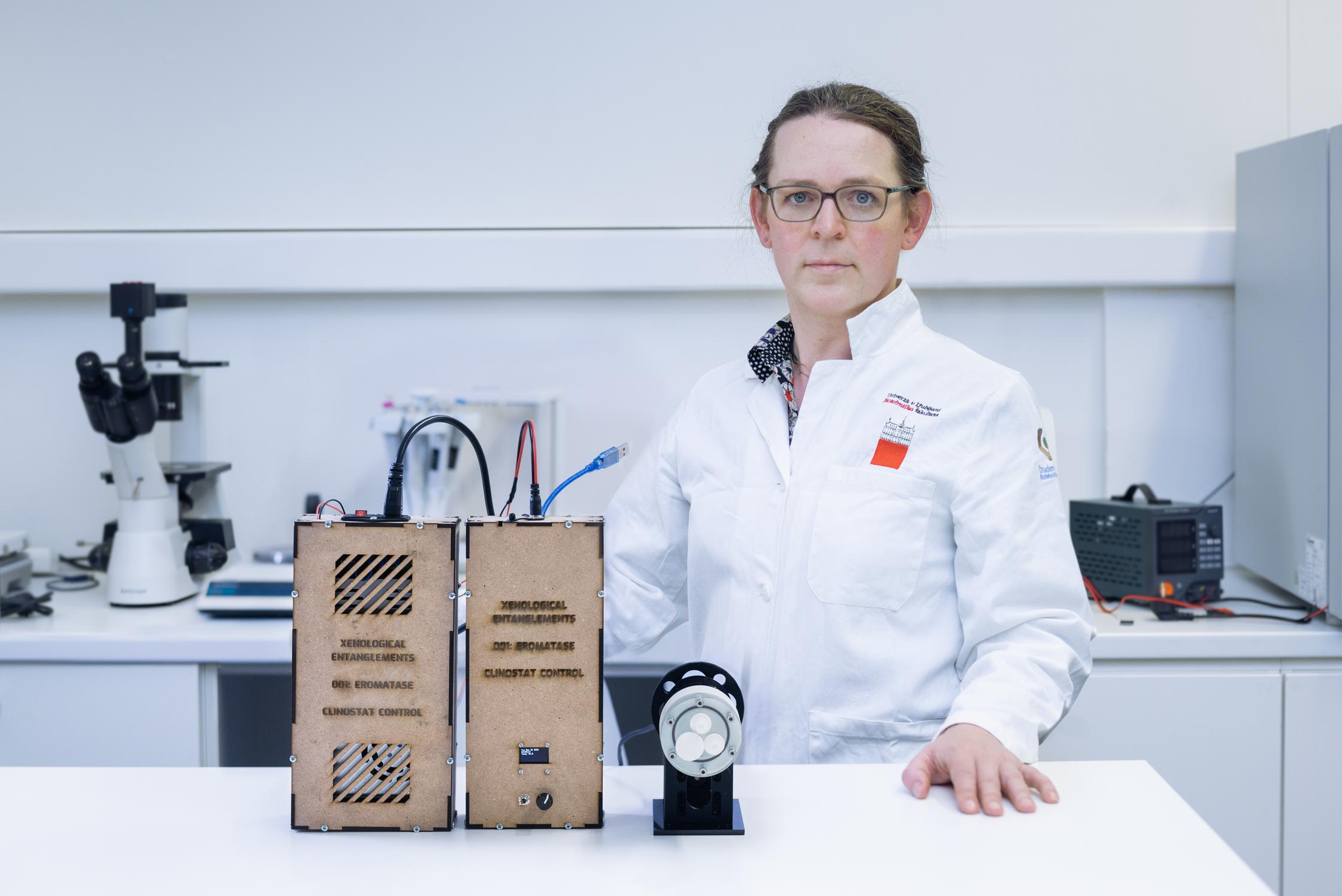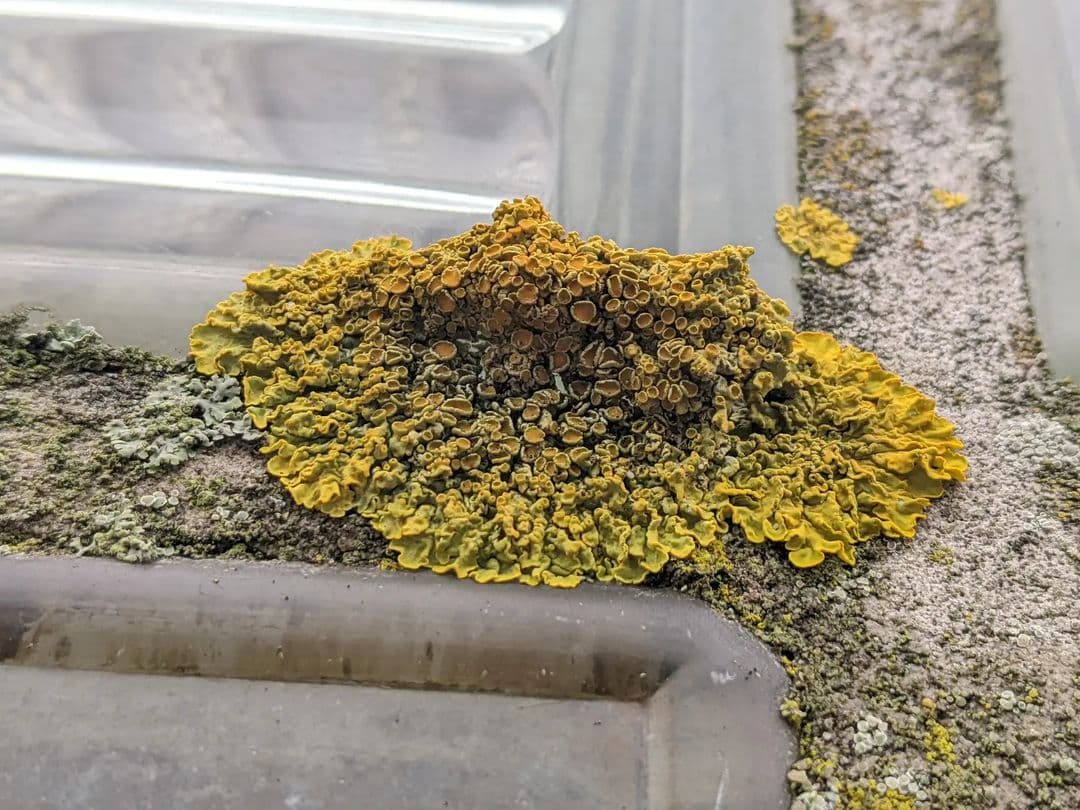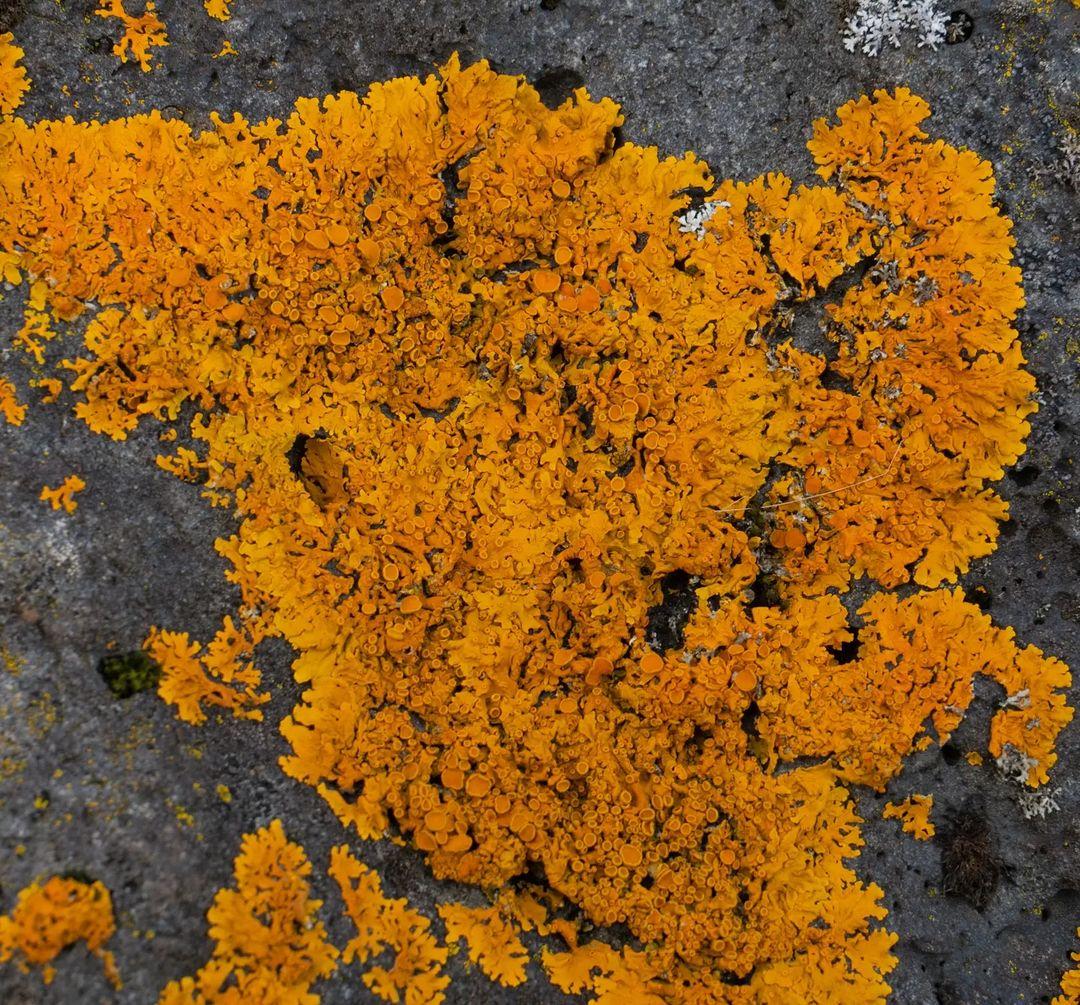Dr. Adriana Knouf is one of Waag’s artist in residences in 2021. Who is she, where did she come from (hint: outer space) and what is she planning to do at Waag?
Hey Adriana, welcome at Waag. You’re from the U.S. originally, right?
Well, I’m from Boston, where I work as Assistant Professor of Art and Design at Northeastern University (Boston). I mainly worked and studied there and in upstate New York.
What made you come to Europe?
One of the reasons is that in Europe, there’s more support of culture and funding for the type of research and art that I want to do. It’s a financially safe and stable position to be Assistant Professor in the U.S., but of course you have to do a lot of teaching and do service work at the university. This I enjoyed, but it leaves only the semester-free summers to work on my own research and art. The question arose: do I continue on this path or jump into the unknown? That’s when I decided to go to Europe. I’m now trying to find my community here. Also, in Europe, and the Netherlands especially, I actually have rights as a trans person at the national level.
We heard that you have plans to settle here for a longer time of period. What makes Amsterdam attractive to you as an artist?
There are more people working on similar research. There’s more of a culture to do my kind of research within an artistic framework. And there are more institutions that support that. Take Waag for example. There’s no equivalent of an institution like Waag in the U.S.
You’re going to work on the Art4Med project at Waag, a European collaboration of five partners where 'art meets open science and technology in health and medical research'. What are the first differences in healthcare that you noticed when coming to Europe?
Let me emphasize that I arrived here as a very privileged transgender woman. In the U.S. most people get access to healthcare through their employer. No job? No health care—or you can get it through government run exchanges as a result of Obamacare, that don’t give you the same benefits for the same amount of money as someone getting healthcare from their job.
As you might know, the American public healthcare is extremely expensive. The ‘eigen risico’ is only around 385 euros in the Netherlands, compared to amounts of $1.500 en $3000 and more in the US. Although I’ve heard from one of my best friends that the Dutch healthcare system is turning more and more neoliberal and is beginning to look more like in the U.S.

On the other hand, some things are easier in the U.S. once you’ve found a specialized doctor or clinic. In Boston, I went to a queer and transgender clinic. They work with an informed consent model. On the first appointment, you have to file an informed consent document, they’ll explain the risks of hormones, and a blood test. On the second visit, if the blood test comes back normal, you get your hormones. There’s no need for psychological evaluation, no gatekeeping and no long waiting lists. I’ve heard that there are waiting lists up to years in the Netherlands, if one wants to get transgender healthcare.
I used to be a social constructivist when thinking about gender: that it’s mostly performance, and that you just do what feels right. But I discovered that gender also has a biochemical component. Especially when your hormones switch to a body that has more estrogen than testosterone, rather than the other way around.
When I came to the Netherlands, I had to ration my estrogen hormones for a month and a half because the paperwork for the residence permit and the health insurance still needed to be completed. This additionally taught me the immense power of the hormones, especially as it pertains to one’s emotional state.

Those hormone patches are life-saving things for me. I never want to go back to the way it was before I was on hormones. It’s not pleasant for me, it’s not what I like. With a smaller amount of estrogen, I experienced anxiety that comes with low estrogen levels. My emotions were all over the place. Through all of these experiences I would now say that sex and gender are biochemically intertwined.
Last year, you were an artist in residence at one of the other five partnering institutes of Art4Med: Kersnikova Institute, Ljubljana (Slovenia). What did you work on for the past year?
Ever since I was a child, I’ve always felt the desire to go somewhere else. It’s tied to the experience of feeling alienated from the world and even my own body, as a kid. I used to go out in the backyard and signal with a flashlight up to the sky, for the aliens to take me somewhere else where it would feel hospitable to me.
That’s why I have been exploring xenology for the last few years. It’s a way of thinking how we can make ourselves ‘other’, in order to explore the possibilities of change. Space is one marker of this possibility. How could I as a trans woman be able to go into space? Well, first I would need my hormones. At Kersnikova, I worked on both scientific projects and artworks tied to this topic.
Wat was the scientific part that you worked on, at the time?
This was part of a project called Xenological Entanglements. 001: Eromatase. We started working with mouse testicular cells to gain more understanding of how to culture them and to understand how to characterize their hormonal production. The research question was: can one use CRISPRa (a genetic method that allows us to “activate” a gene in a cell) to “turn on” the aromatase gene in these cells, so that the testosterone that is normally produced would be converted into estrogen?

This is a difficult task. Eventually, we were able to begin with was the groundwork: learning how to culture the cells and developing protocols for characterization of the produced hormones.
What is the goal of the research?
Eventually we want to work with my own cells that are collected through a biopsy on my own testicles, to see if CRISPRa can make them produce estrogen instead of testosterone. In part this is also a way to rethink how we relate to the testicles and their cultural coding, pushing them away from their position as these hyper-masculine elements of the body.
There are many ways of being a trans person. Some people feel just fine with changing their name, appearance, or being on hormones. Others feel a need for surgeries to address dysphoria. I think in general though it would behoove us to remove the coding we have inherited that marks certain genitalia as being essentially masculine or feminine.
A lot of people find genetic engineering scary. How would you reply to that?
Well, I could start off with the blasé answer that we have been genetically modifying plants and animals since the rise of agriculture. I’m less concerned about genetic engineering per se, but rather that it will be purely profit-driven. These tools are currently used primarily by large for-profit pharma companies or within academic research labs. Take the corona vaccines: we could have more of them if they were open sourced. Perhaps we wouldn’t be in the state we are now with vaccine distribution if they weren’t controlled by patents. Why should we leave it up to the big commercial companies to experiment with genetic engineering?

It’s all the more important to make sure that everybody has open access to this technique, within the possibilities of generous legal frameworks. I’m working within the context of trans bodies, where I’m exploring the possibilities that are already within us. We are already transforming our bodies hormonally and surgically, so why not also genetically?
What else did you do at Kersnikova?
I was able to send a very small artwork to the International Space Station: TX-1. I sent fragments of my hormone replacement medications, and one of them was part of a patch that I actually wore.
So pieces of a trans woman actually did travel into space?
Yes! It orbited in space for a month on the space station and then came back to earth.
What are you planning to work on during the upcoming year at Waag, as an artist in residence?
I want to continue working on CRISPRa and genetic engineering. I’d need to find some partners to do that here, because of the legal regulations. Hopefully this work could also lead to some public workshops and discussions about the technique and genetic engineering more broadly.
I also want to explore some broader questions about our relationship with other entities on this planet. This is connected with the opportunity to work with dr. Heather Leslie (microplastics researcher, VU) within Art4med. How can we move from thinking about other entities on the planet from the position of the commensal?
Can you explain to the lay: what does the commensal mean?
Commensal means that you’re living alongside each other, within the same niche. Not symbiotic, not pathogenic: just together and alongside, with occasional benefits. Take your gut or skin bacteria and fungi: we live with trillions of them, and most of the time we’re not aware of their presence. But also take the microplastics, for example, that litter our oceans. How do we learn to live with this?
Shouldn’t we keep fighting against environmental pollution?
Of course we have to ensure that it doesn’t get worse. But we’re not going to get rid of all these plastics that already litter the oceans. They’re with us—and the organisms in the ocean—now. We need to learn how to live with this while also working to reduce the amounts that we add to the environment in the future.
In a sense it’s also connected to my extraterrestrial research. How do we live with the cosmos? How do we learn how to “be with” other entities, whether they’re on this planet or out there in the universe? I’d like to have the abilities to experience the cosmos in as many ways possible. I want to know what it is to be a different kind of physical phenomenon like light. I just want to know what it means to experience these things. And to experience a communion through this.
That’s some deep shit. How do all these things come together?
In the end, it’s all about living alongside each other and interconnection. The relation between the two projects is to deliver hormones with the commensal body! I don’t know yet where it’s going to go as an art work, but first I’m going to do a lot of research in ecofeminism, ecology, and other relevant scientific domains.
We’re also going to host a public programme and workshops with you at Waag. What kind of groups would you like to reach out to during your stay?
I want to reach out to trans and queer groups. I’m also planning to talk with the Trans United Europe health clinic in the Red Light District. Also, I’d like to do a workshop with other queer and xeno people about xenology. But I also want to invite a broader audience and scientists for the workshops with CRISPRa. What’s the imaginary around these technologies and how can we learn to work with them differently?
Would you like to stay updated on Adriana's work? Follow the Tranxxenolab on Instagram, Facebook and Twitter. Go to tranxxenolab.net for more info. Mail: asknouf ⟨ at ⟩ tranxxenolab.net.


